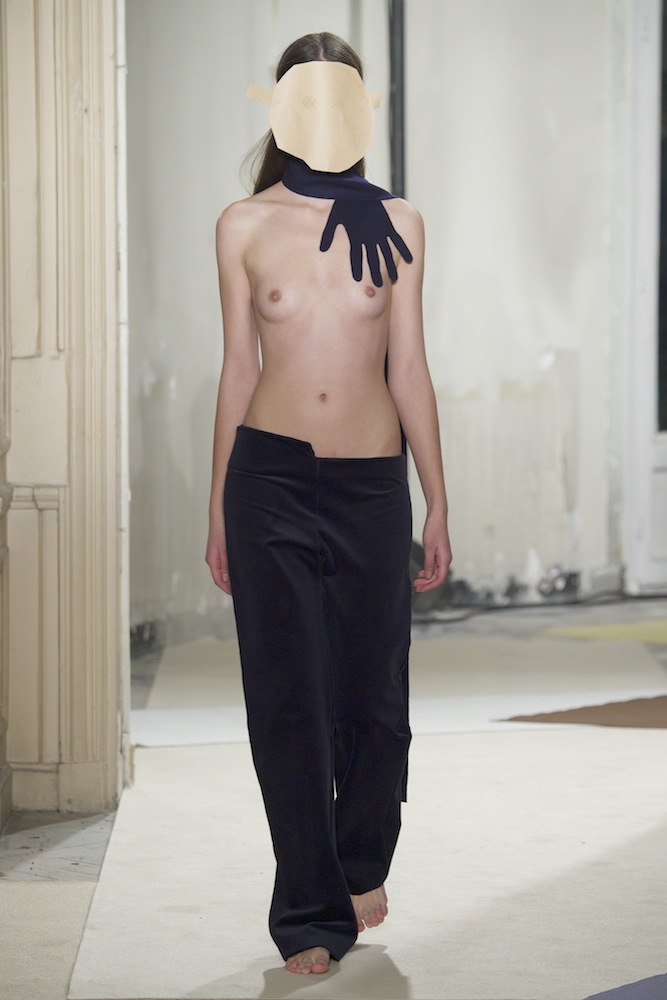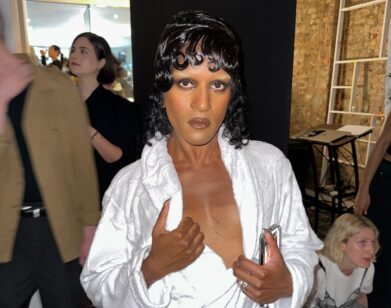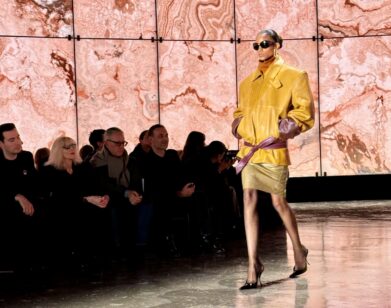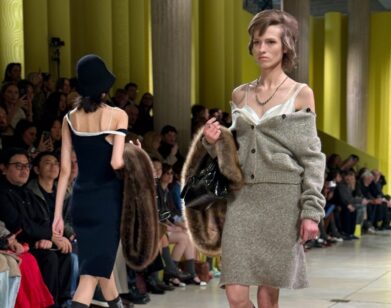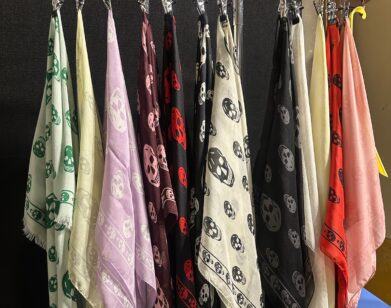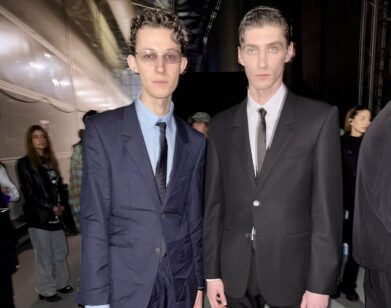Jacquemus’s Eternal Sunshine
Simon Porte Jacquemus, the two-time LVMH Prize finalist and designer behind the cultish womenswear label Jacquemus, has not deleted, nor contemplated deleting, his ever-growing Instagram account where he shares whimsical musings in a triptych format (his seaside diving portraits are particularly popular).
Only half a dozen or so collections into his career, Jacquemus has managed to clearly and quickly define his eponymous brand. However, he is aiming to get to the root of things and explore the evolution of man. “She’s not the easy or cool girl that you see in Paris,” he says of his Fall/Winter 2015 muse. “I’m exploring beauty, dreams, not in the princess way, but poetry…I don’t know if people will get it, but it’s what I’m exploring.”
Jacquemus has carved out a niche in the fashion landscape so specific that he’s already feeling a need redefine his message. For Fall 2015, that meant working with his hands, quite literally. Evident in the collection was a motif of simple outlines of his five fingers, spread in a star formation, derived from “one of [his] earliest drawings.”
“I wanted to do something primal. I noticed the energy around had changed since the last collection, and I thought to have a new woman. The look is not as perfect as it was before with matching tops and skirts.” Instead, the designer offered a mix and match collage of abstract shapes that wrapped around the body.
Jacquemus’ “jazz hands” took shape in the form of “suspenders” in either felted wool or painted directly onto the models’ bodies, with wrists and arms stretched over the shoulders reaching toward one’s nether region.
In true web 2.0 fashion, the designer teased his new collection via his preferred method of communication, a certain 1:1 digital square. The series was presented in a trio of simple outline drawings of his hand, a single thumb colored in blue ink scribbles.
When we visited the 25 year old designer at his charming Le Marais district atelier, he also shared, “One of the first dresses I made was created using my mother’s drapes,” à la Scarlett O’Hara in Gone with the Wind. The oversize rings seen throughout the collection, some with fabric pulled through them, are a nod to this more innocent time.
His rainbow bright beach ball stripes had all but disappeared, save for one lone red ring on a black dress. And the girls, all barefoot, some even with bare breasts and childlike paper masks over their faces, might’ve come straight from a Gauguin painting, minus the hue saturation, obviously.
“It’s not random,” he continued, “but much more spontaneous, like a Gondry film. And it’s not about a boy or a girl in the clothes, either. There is no sexuality in this collection. It’s simply about playful times, when children just don’t care how they dress themselves.”
Perhaps that will help explain the collection’s many blouses without traditional armholes, but instead a swath of fabric encasing the upper arm like a cask as if a young kid has put his head or arm through the sleeve instead of the garment’s neck opening. “Children,” he continued, “they put on many elements, sometimes it’s weird, and sometimes it’s beautiful.” And that very sentiment perfectly encapsulates this collection. Oh, to have a spotless mind…

